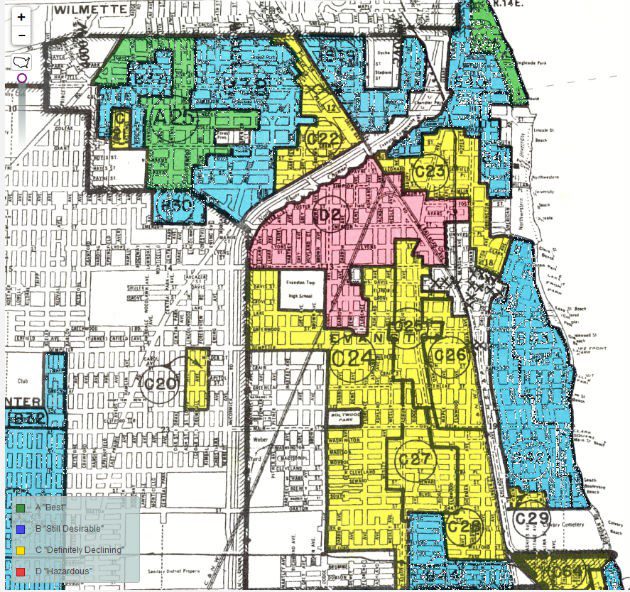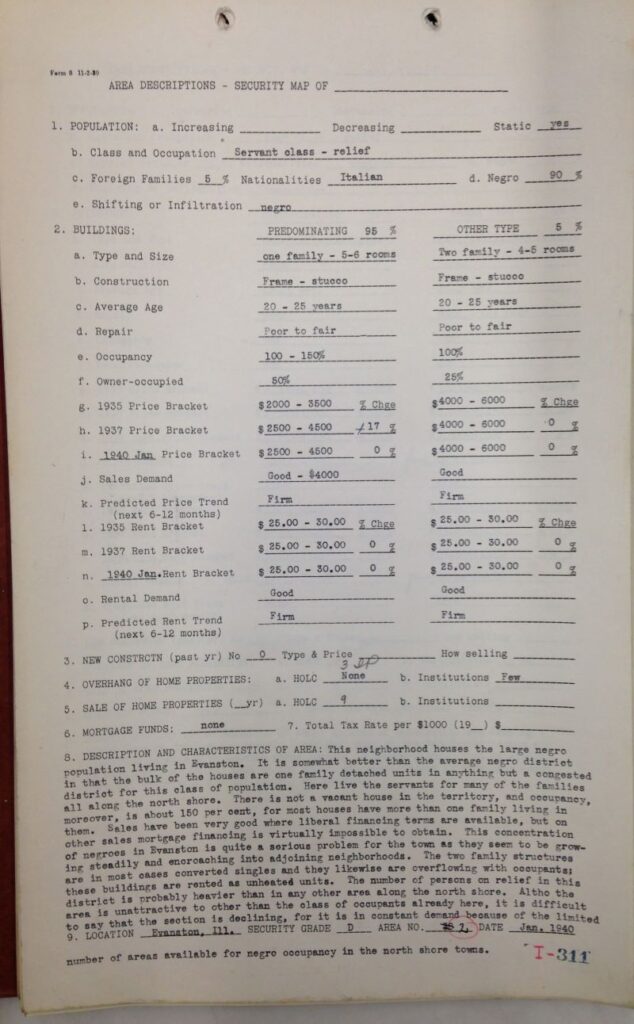Redlining Reparations: Evanston Illinois takes a Lead in Addressing the Race Wealth Gap

“This neighborhood houses the large negro population living in Evanston. It is somewhat better than the average negro district in that the bulk of the houses are one family detached units in anything but a congested district for this class of population. Here live the servants for many of the families all along the north shore. There is not a vacant house in the territory, and occupancy, moreover, is about 150 percent for most houses have more than one family living in them. Sales have been very good where liberal financing terms are available, but on other sales mortgage financing is virtually impossible to obtain. This concentration of negroes in Evanston is quite a serious problem for the town as they seem to be growing steadily and encroaching into adjoining neighborhoods. The two family structures are in most cases converted singles and they likewise are overflowing with occupants; these buildings are rented as unheated units. The number of persons on relief in this district is probably heavier than in any other area along the north shore. Although this area is unattractive to other than the class of occupants already here, it is difficult to say that the section is declining, for it is in constant demand because of the limited number of areas available for negro occupancy in the north shore towns.
Location: Evanston, Ill. Security Grade: D Area No: 2 Date: Jan. 1940
(https://dsl.richmond.edu/panorama/redlining/)

Evanston, IL will be the first city in the United States to make good on their promise to offer a reparations program to its black residents that have suffered economic devastation from discriminatory lending practice (https://www.cityofevanston.org/government/city-council/reparations). In 2019, the city council voted to provide $10 million towards a housing program for black residents, and on March 1st the Council approved a $400,000 initiative to be doled out in $25,000 grants for home improvement or down payments. The grants will be made to qualifying residents who can show they lived in Evanston from 1919-1969 or were a direct descendant of an individual that lived in the area and suffered from discriminatory lending practices.
Evanston’s focus on housing is an excellent way to bring reparations to communities of color, who have suffered decades of discrimination and should be used as a blueprint for cities across the country. Too often the call for reparations begins and ends with reparations for slavery. While reparations for slavery are necessary to address the inequities in American society, they are only a beginning. Focusing on slavery ignores the century of institutionalized discriminatory practices that kept black and other minority Americans from achieving the most important source of wealth accumulation: home ownership (https://www.huduser.gov/publications/pdf/wealthaccumulationandhomeownership.pdf ) The Post-WW2 economic boom was helped in large part by the G.I. Bill which promised low-rate mortgages, low interest loans and education to those who fought in WW2. But black veterans who fought to end a holocaust in Europe faced their own holocaust when they returned home in the form of lynching and red lining when they tried to cash in on the benefits of the GI Bill (https://www.history.com/news/gi-bill-black-wwii-veterans-benefits). The newly minted Home Owners Loan Corporation (HOLC), began rating neighborhood with four grades A: “Best”, B: “Still Desirable”, C: “Definitely Declining”, and D: “Hazardous”
